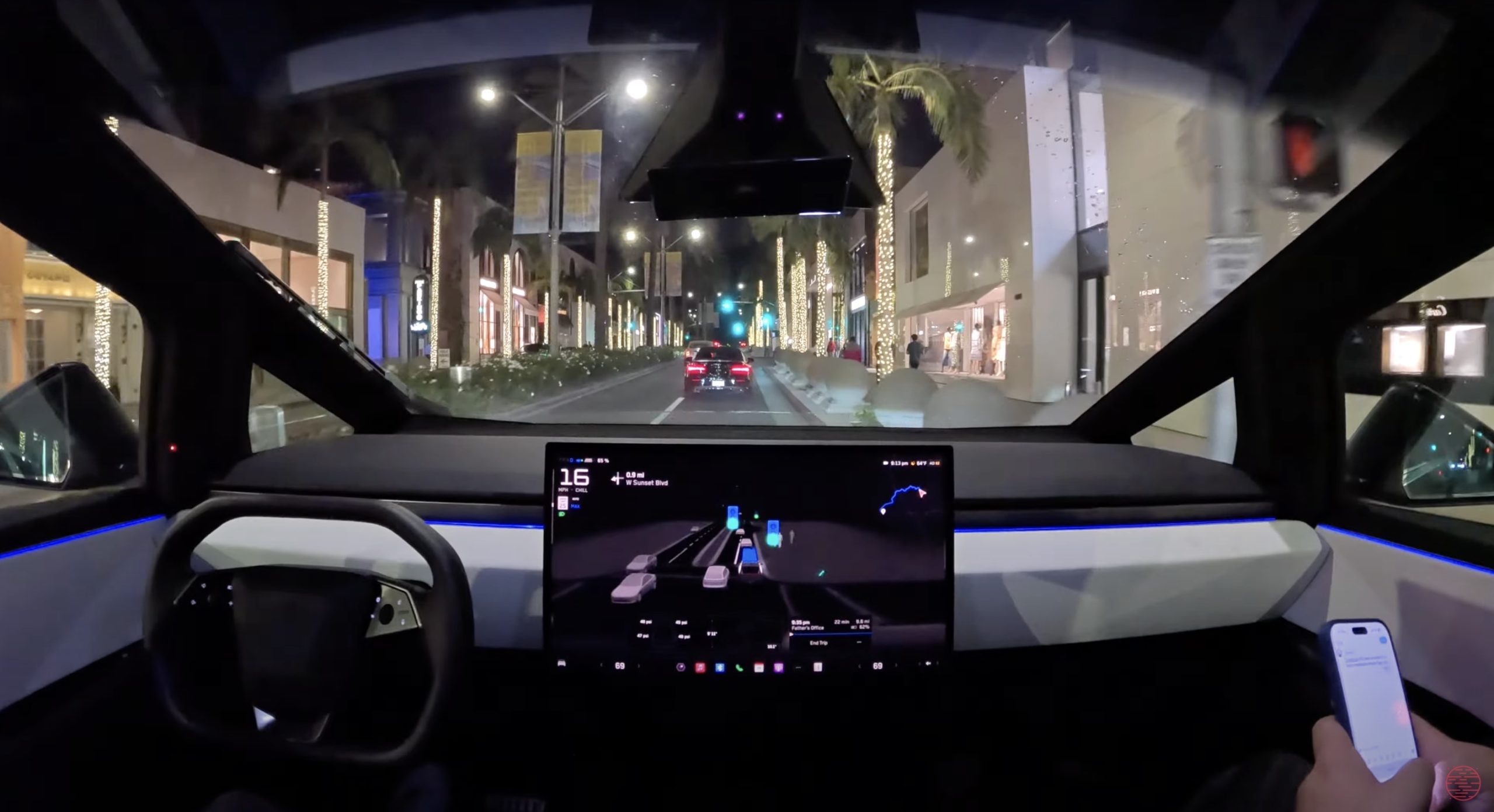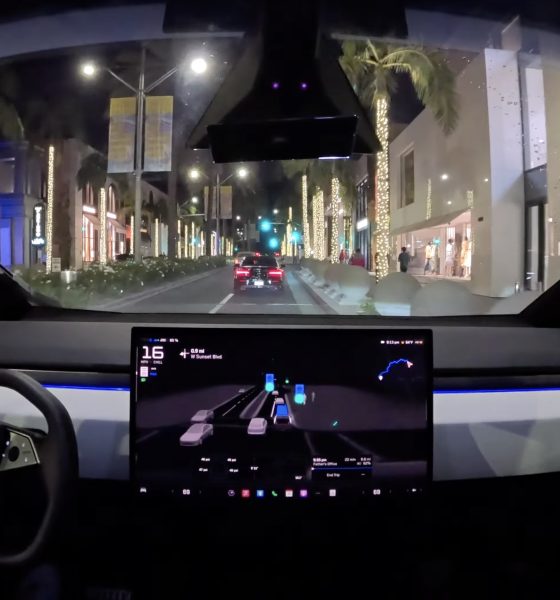The Tesla AI team has provided an update to its ongoing projects, including the release of Full Self-Driving (FSD) V13. Based on the team’s post, it appears that a good number of Tesla customers will be able to experience FSD V13 by this coming Thanksgiving.
Back in early September, the Tesla AI team published a number of ambitious targets, including the release of FSD for the Cybertruck by the end of the month. The team also noted that it would aim to release Unpark, Park, and Reverse in FSD, as well as FSD V13 within October 2024. The Tesla AI team completed all its self-imposed goals for September, though based on the team’s recent post on X, it appears that V13 is coming later.
As noted by the team, Tesla actually completed a number of milestones in October, such as the shipping of end-to-end highway FSD to about 50,000 customers with v12.5.6.1. Updates to the Cybertruck’s FSD have also been released. Lastly, Tesla also held a successful unveiling of its robotaxi, the Cybercab, at the We, Robot event.
As per the Tesla AI team, FSD V13.0 is expected to be released to internal customers by the end of this week. Granted, this is slightly later than expected, but considering that V13’s improvements are expected to be quite substantial, the longer wait time will likely be worth it.
As October comes to a close, here's an update on the releases
What we completed:
– End-to-end on highway has shipped to ~50k customers with v12.5.6.1
– Cybertruck build that improves responsiveness
– Successful We, Robot event with 50 autonomous Teslas safely transporting over… https://t.co/2xKiAjrk5R— Tesla AI (@Tesla_AI) October 31, 2024
Following is what is coming next, as per the Tesla AI team.
- Full rollout of end-to-end highway driving to all AI4 users, targeted for early next week, including enhancements in stop smoothness, less annoying bad weather notifications, and other safety improvements
- Improved v12.5.x models for AI3 city driving
- Actually Smart Summon release to Europe, China and other regions of the world
- v13 is a package of following major technology upgrades:
- 36 Hz, full-resolution AI4 video inputs
- Native AI4 inputs and neural network architectures
- 3x model size scaling
- 3x model context length scaling
- 4.2x data scaling
- 5x training compute scaling (enabled by the Cortex training cluster)
- Much improved reward predictions for collision avoidance, following traffic controls, navigation, etc.
- Efficient representation of maps and navigation inputs
- Audio inputs for better handling of emergency vehicles
- Redesigned controller for smoother, more accurate tracking
- Integrated unpark, reverse, and park capabilities
- Support for destination options including pulling over, parking in a spot, driveway, or garage
- Improved camera cleaning and handling of camera occlusions
We have integrated several of these improvements and are already seeing a 4x increase in miles between necessary interventions compared to v12.5.4.
This lays the foundation for the v13 series, and we are targeting to ship v13.0 to internal customers by the end of this week.
Most of the remaining items are independently validated and will be integrated over November in a series of point releases.
We are targeting a wide release with v13.3 with most of the above improvements for AI4 vehicles around Thanksgiving!
Don’t hesitate to contact us with news tips. Just send a message to simon@teslarati.com to give us a heads up.

News
Tesla FSD fleet is nearing 7 billion total miles, including 2.5 billion city miles
As can be seen on Tesla’s official FSD webpage, vehicles equipped with the system have now navigated over 6.99 billion miles.

Tesla’s Full Self-Driving (Supervised) fleet is closing in on almost 7 billion total miles driven, as per data posted by the company on its official FSD webpage.
These figures hint at the massive scale of data fueling Tesla’s rapid FSD improvements, which have been quite notable as of late.
FSD mileage milestones
As can be seen on Tesla’s official FSD webpage, vehicles equipped with the system have now navigated over 6.99 billion miles. Tesla owner and avid FSD tester Whole Mars Catalog also shared a screenshot indicating that from the nearly 7 billion miles traveled by the FSD fleet, more than 2.5 billion miles were driven inside cities.
City miles are particularly valuable for complex urban scenarios like unprotected turns, pedestrian interactions, and traffic lights. This is also the difference-maker for FSD, as only complex solutions, such as Waymo’s self-driving taxis, operate similarly on inner-city streets. And even then, incidents such as the San Francisco blackouts have proven challenging for sensor-rich vehicles like Waymos.
Tesla’s data edge
Tesla has a number of advantages in the autonomous vehicle sector, one of which is the size of its fleet and the number of vehicles training FSD on real-world roads. Tesla’s nearly 7 billion FSD miles then allow the company to roll out updates that make its vehicles behave like they are being driven by experienced drivers, even if they are operating on their own.
So notable are Tesla’s improvements to FSD that NVIDIA Director of Robotics Jim Fan, after experiencing FSD v14, noted that the system is the first AI that passes what he described as a “Physical Turing Test.”
“Despite knowing exactly how robot learning works, I still find it magical watching the steering wheel turn by itself. First it feels surreal, next it becomes routine. Then, like the smartphone, taking it away actively hurts. This is how humanity gets rewired and glued to god-like technologies,” Fan wrote in a post on X.
News
Tesla starts showing how FSD will change lives in Europe
Local officials tested the system on narrow country roads and were impressed by FSD’s smooth, human-like driving, with some calling the service a game-changer for everyday life in areas that are far from urban centers.

Tesla has launched Europe’s first public shuttle service using Full Self-Driving (Supervised) in the rural Eifelkreis Bitburg-Prüm region of Germany, demonstrating how the technology can restore independence and mobility for people who struggle with limited transport options.
Local officials tested the system on narrow country roads and were impressed by FSD’s smooth, human-like driving, with some calling the service a game-changer for everyday life in areas that are far from urban centers.
Officials see real impact on rural residents
Arzfeld Mayor Johannes Kuhl and District Administrator Andreas Kruppert personally tested the Tesla shuttle service. This allowed them to see just how well FSD navigated winding lanes and rural roads confidently. Kruppert said, “Autonomous driving sounds like science fiction to many, but we simply see here that it works totally well in rural regions too.” Kuhl, for his part, also noted that FSD “feels like a very experienced driver.”
The pilot complements the area’s “Citizen Bus” program, which provides on-demand rides for elderly residents who can no longer drive themselves. Tesla Europe shared a video of a demonstration of the service, highlighting how FSD gives people their freedom back, even in places where public transport is not as prevalent.
What the Ministry for Economic Affairs and Transport says
Rhineland-Palatinate’s Minister Daniela Schmitt supported the project, praising the collaboration that made this “first of its kind in Europe” possible. As per the ministry, the rural rollout for the service shows FSD’s potential beyond major cities, and it delivers tangible benefits like grocery runs, doctor visits, and social connections for isolated residents.
“Reliable and flexible mobility is especially vital in rural areas. With the launch of a shuttle service using self-driving vehicles (FSD supervised) by Tesla in the Eifelkreis Bitburg-Prüm, an innovative pilot project is now getting underway that complements local community bus services. It is the first project of its kind in Europe.
“The result is a real gain for rural mobility: greater accessibility, more flexibility and tangible benefits for everyday life. A strong signal for innovation, cooperation and future-oriented mobility beyond urban centers,” the ministry wrote in a LinkedIn post.
News
Tesla China quietly posts Robotaxi-related job listing
Tesla China is currently seeking a Low Voltage Electrical Engineer to work on circuit board design for the company’s autonomous vehicles.

Tesla has posted a new job listing in Shanghai explicitly tied to its Robotaxi program, fueling speculation that the company is preparing to launch its dedicated autonomous ride-hailing service in China.
As noted in the listing, Tesla China is currently seeking a Low Voltage Electrical Engineer to work on circuit board design for the company’s autonomous vehicles.
Robotaxi-specific role
The listing, which was shared on social media platform X by industry watcher @tslaming, suggested that Tesla China is looking to fill the role urgently. The job listing itself specifically mentions that the person hired for the role will be working on the Low Voltage Hardware team, which would design the circuit boards that would serve as the nervous system of the Robotaxi.
Key tasks for the role, as indicated in the job listing, include collaboration with PCB layout, firmware, mechanical, program management, and validation teams, among other responsibilities. The role is based in Shanghai.
China Robotaxi launch
China represents a massive potential market for robotaxis, with its dense urban centers and supportive policies in select cities. Tesla has limited permission to roll out FSD in the country, though despite this, its vehicles have been hailed as among the best in the market when it comes to autonomous features. So far, at least, it appears that China supports Tesla’s FSD and Robotaxi rollout.
This was hinted at in November, when Tesla brought the Cybercab to the 8th China International Import Expo (CIIE) in Shanghai, marking the first time that the autonomous two-seater was brought to the Asia-Pacific region. The vehicle, despite not having a release date in China, received a significant amount of interest among the event’s attendees.










